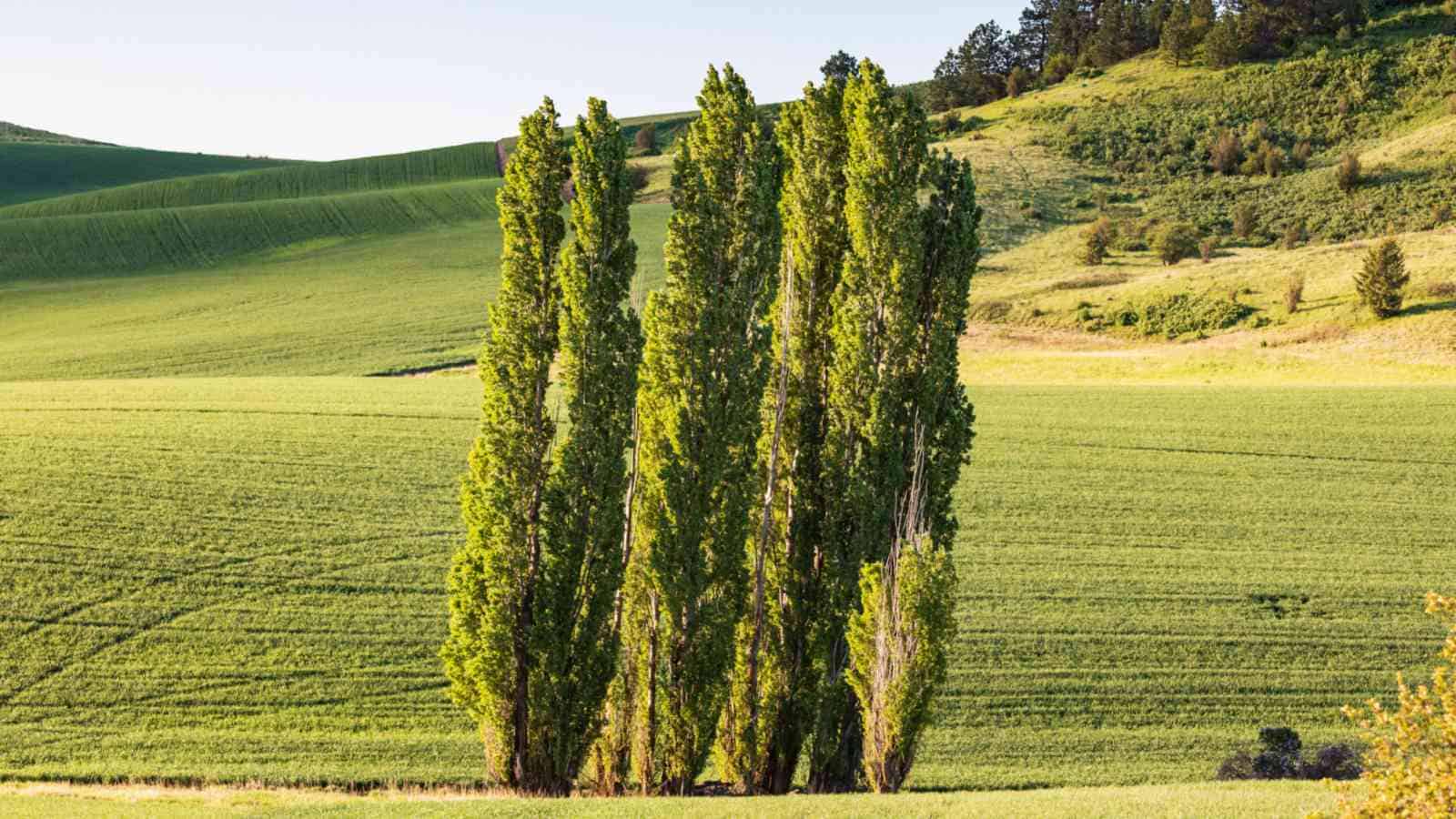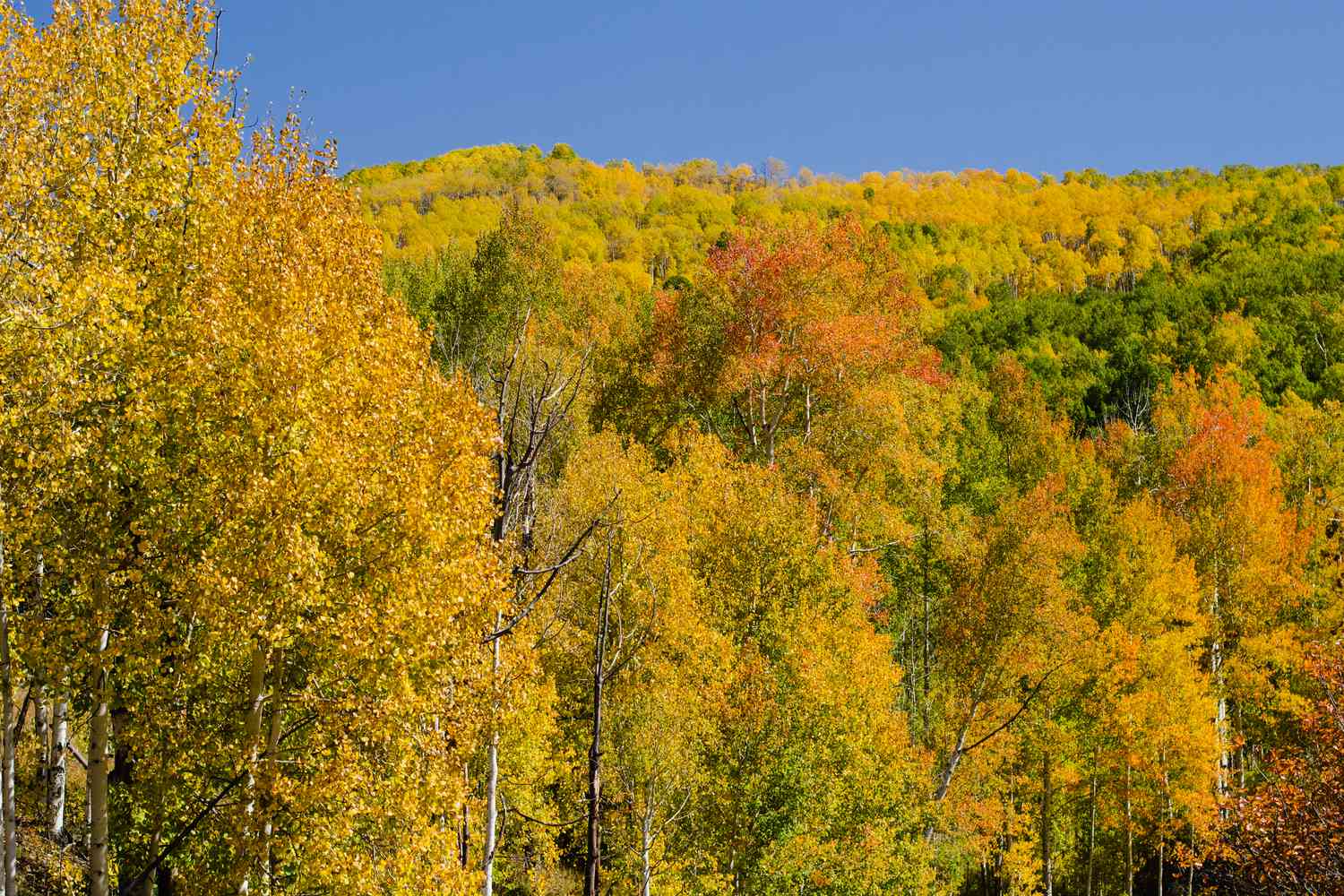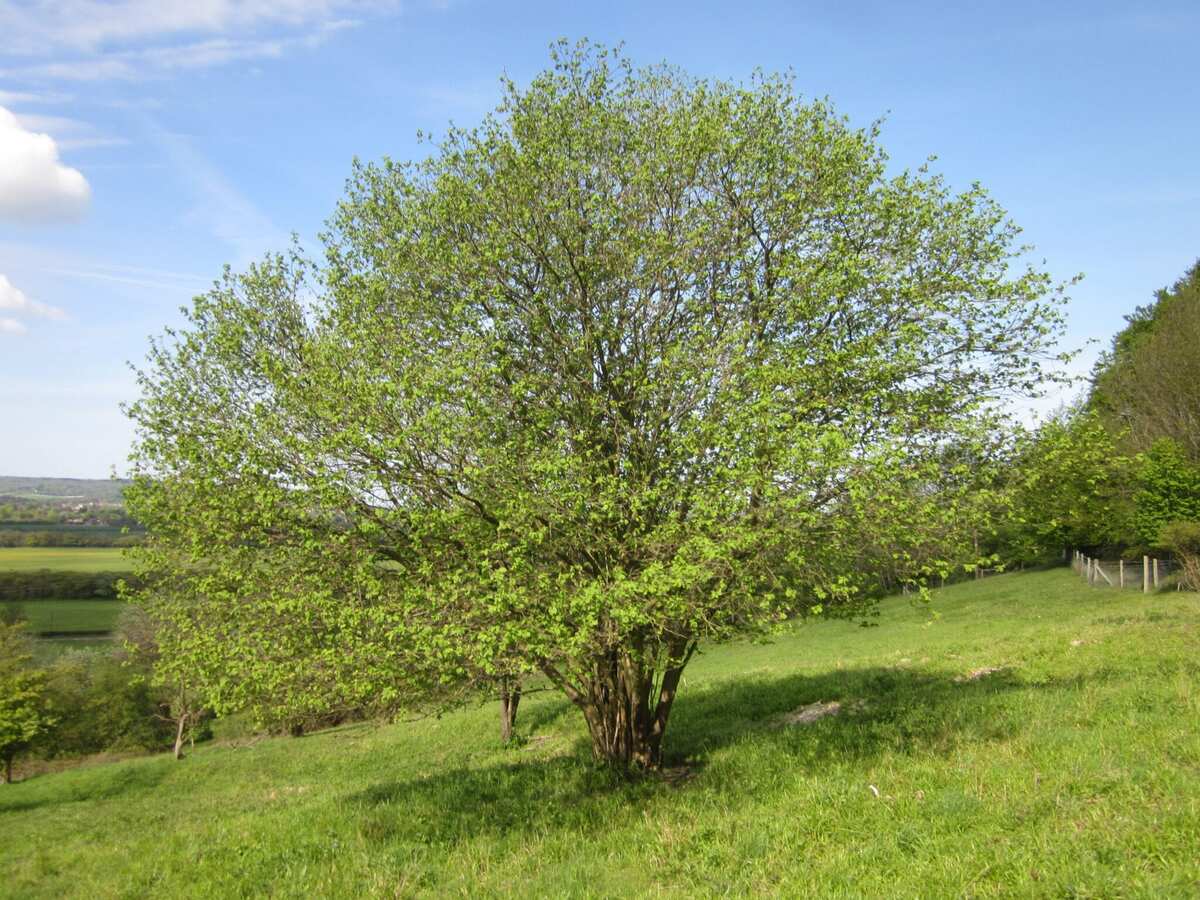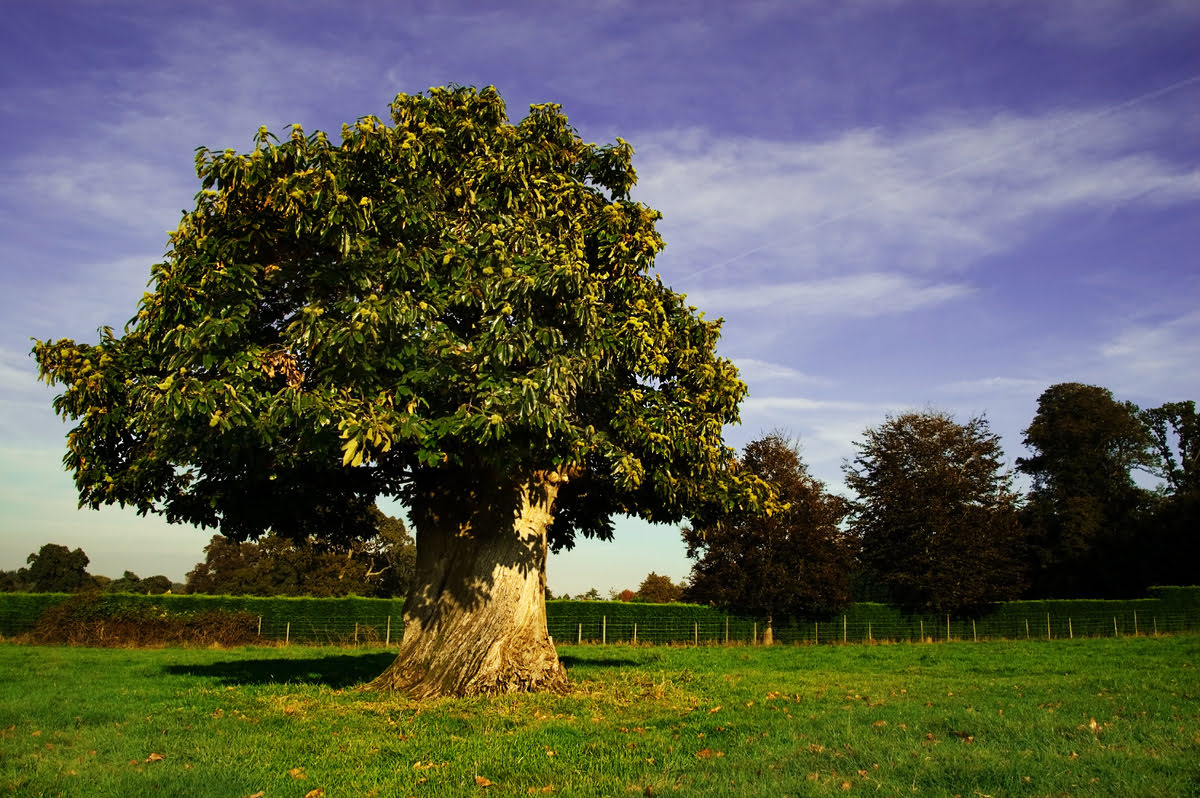Home>Gardening Techniques>Plant Care>Where Do Trees Get Their Mass


Plant Care
Where Do Trees Get Their Mass
Modified: January 22, 2024
Discover the secret behind how trees gain mass and learn essential plant care tips to ensure their growth and vitality.
(Many of the links in this article redirect to a specific reviewed product. Your purchase of these products through affiliate links helps to generate commission for Chicagolandgardening.com, at no extra cost. Learn more)
Table of Contents
Introduction
When we look at the towering trees that surround us, it’s hard not to be awestruck by their sheer size and presence. From the magnificent oak to the delicate cherry blossom, trees are not only essential for the environment but also provide immeasurable beauty and benefits to our world. However, have you ever wondered how trees achieve such impressive mass?
Understanding how trees gain and maintain their mass is crucial for plant care enthusiasts, arborists, and those who appreciate the wonders of nature. By delving into the intricate mechanisms behind tree mass accumulation, we can gain a deeper appreciation for these majestic organisms.
In this article, we will explore the fundamental building blocks of trees, the processes that contribute to mass accumulation, and the factors that influence tree mass. By the end, you will have a comprehensive understanding of where trees get their mass and the importance of proper plant care.
So, let’s embark on this fascinating journey and unravel the mysteries of tree mass!
Importance of Understanding Tree Mass
Why is it important to understand how trees gain and maintain their mass? The answer lies in the many benefits that trees provide to the environment and our daily lives. By comprehending tree mass, we can better care for and appreciate these remarkable organisms. Here are a few reasons why understanding tree mass is crucial:
- Effective Plant Care: Understanding tree mass enables us to provide proper care, allowing trees to thrive in their environment. By knowing the factors that contribute to mass accumulation, such as nutrient uptake and water transport, we can optimize our plant care practices, ensuring healthy tree growth.
- Environmental Impact: Trees play a vital role in maintaining the balance of our ecosystems. They absorb carbon dioxide, release oxygen, and provide crucial habitats for a wide range of organisms. By understanding tree mass, we can appreciate the significance of trees in mitigating climate change and preserving biodiversity.
- Tree Health and Disease Prevention: Tree mass can indicate the overall health and vitality of a tree. Changes in mass may signal nutrient deficiencies, diseases, or pest infestations. By monitoring tree mass, arborists can identify potential issues early on and take necessary measures to prevent further damage and promote tree health.
- Urban Planning: Understanding tree mass helps in urban planning and landscaping decisions. By considering the growth potential and size of different tree species, we can strategically plant trees to maximize their aesthetic value, provide shade, and mitigate the urban heat island effect.
- Education and Awareness: Knowledge of tree mass provides educational opportunities to raise awareness about the importance of trees. By sharing this knowledge, we can cultivate a deeper appreciation for the role of trees in our environment and inspire others to join in tree conservation efforts.
As you can see, understanding tree mass goes beyond mere curiosity. It allows us to care for trees effectively, protect our environment, and create harmonious spaces where both humans and nature can thrive. By recognizing the importance of tree mass, we take a step towards a greener and healthier future.
The Fundamental Building Blocks of Trees
To comprehend where trees get their mass, we must first understand the basic components that make up these remarkable organisms. Trees are composed of several fundamental building blocks that contribute to their structure and mass accumulation:
- Cellulose: Cellulose is a complex carbohydrate and the main constituent of a tree’s cell walls. It provides structural support and rigidity to the tree’s tissues. Cellulose makes up a significant portion of a tree’s mass.
- Hemicellulose: Alongside cellulose, hemicellulose is another component of a tree’s cell walls. Hemicellulose contributes to the flexibility and strength of the cell walls, aiding in the tree’s ability to withstand external forces.
- Lignin: Lignin is a complex organic polymer that provides additional strength and rigidity to a tree’s cell walls. It helps trees withstand wind and gravity, contributing to their height and structural integrity.
- Proteins and Enzymes: Proteins and enzymes play crucial roles in tree development and growth. They are responsible for various metabolic processes, including the synthesis of new cells, regulation of DNA, and breaking down complex molecules for nutrient absorption.
- Water: Water is essential for tree growth and mass accumulation. It serves as a transportation medium for nutrients, allowing them to reach different parts of the tree. Water is also vital for maintaining turgor pressure, which keeps the tree structurally upright and hydrated.
- Nutrients: Trees require a variety of macro and micronutrients to support their growth and metabolism. Nitrogen, phosphorus, potassium, and calcium are some of the essential macronutrients, while iron, manganese, zinc, and copper are important micronutrients. These nutrients are absorbed from the soil through the tree’s roots.
By having a clear understanding of these fundamental building blocks, we can better appreciate the complex structures and processes involved in tree development and mass accumulation. Trees are truly incredible organisms, using these components to grow, adapt to their environment, and provide numerous benefits to the ecosystem.
Photosynthesis and Mass Accumulation in Trees
Photosynthesis, the process through which trees convert sunlight into energy, is a key mechanism for mass accumulation in trees. This remarkable process allows trees to produce the carbohydrates and other organic compounds necessary for growth. Here’s how photosynthesis contributes to the mass accumulation in trees:
1. Light Absorption: Trees have specialized structures called chloroplasts, which contain a pigment called chlorophyll. Chlorophyll absorbs sunlight, specifically capturing the energy from the blue and red spectra of light.
2. Carbon Dioxide Uptake: Trees also have tiny pores called stomata on their leaves, through which they take in carbon dioxide from the surrounding air. This carbon dioxide serves as a source of carbon for the synthesis of carbohydrates.
3. Phase 1: Light Reactions: In this phase, light energy is used to split water molecules into hydrogen and oxygen atoms in a process called photolysis. The hydrogen atoms are then used to generate energy-rich molecules such as ATP (adenosine triphosphate) and NADPH (nicotinamide adenine dinucleotide phosphate), which are essential for the next phase of photosynthesis.
4. Phase 2: Calvin Cycle (Dark Reactions): In the Calvin cycle, carbon dioxide combines with the energy-rich molecules produced in the light reactions to form glucose and other organic compounds. These carbohydrates are then used for immediate energy needs and stored as starch for future use.
5. Carbohydrate Transport and Storage: The carbohydrates produced during photosynthesis are transported through the phloem, a specialized tissue in the tree, to various parts of the plant. Some carbohydrates are stored in the form of starch in roots, stems, and other storage organs, contributing to the tree’s mass.
Photosynthesis is a complex yet intricate process that allows trees to harness energy from sunlight and convert it into chemical energy. Through this process, trees not only gain mass but also produce oxygen, a byproduct released into the atmosphere, which supports life on Earth.
By understanding the importance of photosynthesis and its role in mass accumulation, we can appreciate the incredible ability of trees to utilize sunlight and convert it into the vital resources needed for growth and survival.
Nutrient Uptake and Mass Gain in Trees
Nutrient uptake plays a crucial role in the mass gain of trees. Trees require a wide range of essential nutrients to support their growth and development. Let’s explore how nutrient uptake contributes to mass accumulation in trees:
1. Root Absorption: Trees have an extensive network of roots that absorb nutrients from the soil. The roots have specialized structures called root hairs that increase the surface area for nutrient absorption. Nutrients such as nitrogen, phosphorus, potassium, and trace elements are taken up by the roots and transported to various parts of the tree.
2. Transportation: Once absorbed, nutrients are transported upward through the xylem, a specialized tissue responsible for water and mineral transport in plants. This movement of nutrients enables their distribution to different parts of the tree, including the leaves, where photosynthesis takes place.
3. Metabolic Processes: Nutrients are essential for various metabolic processes in trees. Nitrogen, for example, is a component of amino acids, proteins, and DNA, which are vital for growth and development. Phosphorus is essential for energy transfer and is a key component of nucleic acids and cell membranes. Potassium regulates water uptake and is involved in enzyme activation.
4. Storing Nutrients: Trees store excess nutrients in different organs, such as roots, stems, and leaves. These nutrient reserves play a critical role during periods of limited nutrient availability, such as during winter or drought. Stored nutrients can be mobilized and used when needed, contributing to the tree’s mass gain and survival.
5. Symbiotic Relationships: Some trees form mutualistic relationships with beneficial fungi called mycorrhizae. These fungi enhance nutrient uptake by increasing the absorbing surface area of the tree’s roots and facilitating the exchange of nutrients between the tree and soil. This symbiotic relationship further aids in nutrient acquisition and mass gain.
Proper nutrient uptake is essential for healthy tree growth and mass accumulation. Nutrient deficiencies can lead to stunted growth, decreased vigor, and susceptibility to diseases and pests. By understanding the significance of nutrient uptake and ensuring that trees have access to a balanced supply of essential elements, we can support their optimal growth and contribute to their overall mass gain.
Water and Mass Transport in Trees
Water is a vital component for trees and plays a significant role in their mass transport. Trees rely on water for numerous physiological processes, including photosynthesis, nutrient uptake, and structural support. Understanding how water is transported within trees can provide insights into their mass gain. Let’s explore the mechanisms of water transport in trees:
1. Root Absorption: Trees absorb water from the soil through their roots. The roots take up water through osmosis, utilizing the concentration gradient between the soil and the root cells. The root system, with its fine root hairs, maximizes the surface area for water absorption.
2. Capillary Action and Cohesion: Water is transported from the roots to the rest of the tree through a network of specialized tissues called xylem. Capillary action and cohesion help to create a continuous column of water within the xylem. Capillary action allows water to move upwards through the small tubes of the xylem, while cohesion ensures that water molecules stick together as they are pulled upwards.
3. Transpiration: Transpiration, the process by which water is lost through the leaves, creates a negative pressure or tension in the xylem. This negative pressure, known as tension or suction, helps in pulling water up from the roots. Transpiration is driven by stomatal openings on the leaf surfaces, through which water vapor escapes as trees exchange gases with the atmosphere.
4. Adhesion: Adhesion is the attractive force between water molecules and the xylem vessel walls. This force allows water to stick to the walls of the xylem, preventing it from separating and ensuring its upward movement towards the canopy.
5. Root Pressure: In addition to transpiration-driven water movement, some trees, especially in certain conditions, such as during the night or in periods of high soil water content, can generate root pressure. Root pressure is the result of active pumping of ions into the xylem, creating a positive pressure that pushes water upwards.
The transport of water within trees facilitates the movement of essential nutrients from the roots to the rest of the plant. It also provides the necessary turgor pressure, maintaining the structural integrity of the tree. Water is crucial for the synthesis of carbohydrates during photosynthesis, contributing to the mass gain of trees.
By understanding the mechanisms of water transport in trees and ensuring proper irrigation, we can support their growth, health, and overall mass accumulation.
The Role of Carbon in Tree Mass
Carbon plays a critical role in the mass gain of trees. Carbon is a key building block required for the synthesis of organic compounds, such as carbohydrates, proteins, and lipids. Let’s explore how carbon contributes to tree mass:
1. Carbon Dioxide Uptake: Trees absorb carbon dioxide (CO2) from the atmosphere through small openings called stomata on their leaves. The carbon in CO2 serves as the primary source of carbon for tree growth and mass accumulation. Through a process called photosynthesis, trees convert carbon dioxide into organic compounds, primarily carbohydrates.
2. Carbohydrate Formation: During photosynthesis, trees use energy from sunlight to convert carbon dioxide and water into glucose, a simple sugar. Glucose is then used as a building block for the synthesis of more complex carbohydrates, such as cellulose, hemicellulose, and starch. These carbohydrates contribute significantly to the overall mass of the tree.
3. Energy Storage: Carbohydrates produced through photosynthesis serve as a vital energy source for trees. Excess glucose can be converted and stored as starch in various parts of the tree, including roots, stems, and fruits. This stored energy can be utilized during periods of growth or when resources are limited, supporting mass gain and survival.
4. Structural Integrity: Carbon compounds, particularly cellulose and lignin, play a crucial role in providing strength and rigidity to a tree’s cell walls. Cellulose contributes to the structural framework of the tree, while lignin provides additional support against external forces such as wind and gravity. These carbon-based compounds contribute significantly to the overall mass and stability of trees.
5. Carbon Sequestration: Trees play a vital role in mitigating climate change by sequestering carbon dioxide. During photosynthesis, trees absorb carbon dioxide from the atmosphere, reducing its concentration. The carbon captured by trees is stored in their tissues for an extended period, effectively removing greenhouse gases from the ecosystem and helping to reduce the effects of global warming.
Understanding the role of carbon in tree mass is crucial for recognizing the importance of trees in carbon sequestration and the overall functioning of our ecosystems. Trees not only contribute to their own mass through carbon accumulation but also play a vital role in maintaining a balance in the carbon cycle and mitigating the impacts of climate change.
Factors Affecting Tree Mass
Several factors influence the mass gain of trees. Understanding these factors is crucial for effective plant care and promoting optimal tree growth. Let’s explore some of the key factors that affect tree mass:
1. Environmental Conditions: Environmental factors, such as temperature, humidity, light availability, and rainfall, have a significant impact on tree growth and mass accumulation. Different tree species have specific environmental requirements, and variations in these conditions can affect photosynthesis, nutrient uptake, and water availability, ultimately influencing tree mass.
2. Soil Quality: The quality and composition of the soil directly impact tree growth and mass gain. Nutrient availability, soil pH, drainage, and the presence of organic matter all play a role in how well trees can absorb nutrients and water, thereby influencing their ability to gain mass. Maintaining healthy soil through proper fertilization and soil management is essential for supporting tree growth.
3. Genetics: Genetic factors inherent to tree species influence their growth potential and mass accumulation. Genetic traits determine the growth rate, form, and size of trees. Some species naturally have higher growth rates and larger mature sizes, contributing to their overall mass gain. Understanding the genetic characteristics of tree species can help in selecting appropriate trees for specific locations and maximizing their mass potential.
4. Competition: Competition from other plants, including nearby trees, shrubs, and grasses, can affect the mass gain of trees. Competition for resources such as light, nutrients, and water can limit the growth and mass accumulation of trees. Adequate spacing and proper pruning can help reduce competition and promote better tree development.
5. Disease and Pests: Disease and pest infestations can impact the health and mass gain of trees. Fungal infections, bacterial diseases, and insect pests can weaken trees, hinder photosynthesis, and reduce nutrient uptake, leading to decreased mass accumulation. Regular monitoring, early detection, and appropriate control measures are essential for maintaining tree health and promoting mass gain.
6. Management Practices: Tree care practices, including pruning, watering, fertilization, and mulching, can influence mass gain. Proper pruning encourages strong and healthy branch structure, while appropriate watering and fertilization provide essential nutrients and maintain adequate moisture levels. Implementing good management practices can support optimal tree growth and contribute to mass accumulation.
By considering these factors and implementing suitable strategies, we can optimize the conditions for tree growth, promote mass gain, and ensure the overall health and vitality of trees in our landscapes.
Conclusion
Understanding where trees get their mass is fundamental for plant care enthusiasts, arborists, and anyone with an appreciation for the beauty and importance of trees. By exploring the processes and factors that contribute to tree mass, we gain a deeper appreciation for the incredible organisms that populate our planet.
We have learned that trees accumulate mass through a combination of photosynthesis, nutrient uptake, water transport, and carbon assimilation. Photosynthesis, driven by sunlight and carbon dioxide absorption, allows trees to produce carbohydrates, the primary building blocks for growth and mass gain. Nutrient uptake from the soil, along with water transport in the xylem, supports tree development and metabolic processes. Carbon plays a vital role in the synthesis of organic compounds and contributes to the structural integrity of trees.
However, understanding tree mass goes beyond mere knowledge. It has practical implications for effective plant care, urban planning, and environmental stewardship. By recognizing the importance of proper tree care, we can promote healthy growth, prevent disease and pest infestations, and create sustainable landscapes.
Our awareness of the factors that affect tree mass, such as environmental conditions, soil quality, genetics, competition, and management practices, allows us to optimize tree growth and ensure their long-term health and vitality. By taking these factors into account, we can support the role of trees in carbon sequestration, biodiversity preservation, and climate change mitigation.
So, let us embrace the wonders of tree mass and continue to nurture these magnificent organisms that provide us with shade, oxygen, and immeasurable beauty. By caring for trees, we contribute to a greener and healthier world for generations to come.










